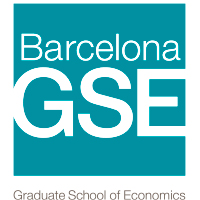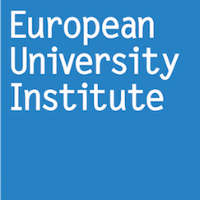雅思写作答题技巧全解析
Editor:Mark| Time:2025-02-21雅思写作作为雅思考试的重要组成部分,对于众多考生来说往往是一道难以逾越的关卡。想要在这部分取得理想的成绩,掌握一些实用的答题技巧至关重要。下面就详细为大家解析雅思写作的答题技巧。
一、明确题目要求
准确理解题意
拿到题目后,务必仔细研读,明确题目所问的核心内容。比如题目是要求讨论利弊,还是阐述原因并提出解决方案,亦或是比较不同观点等。如果理解偏差,即便文章写得再精彩,也可能会偏离主题,得不到高分。例如,题目问“Should governments spend more money on improving public transportation or on protecting the environment?” 有些考生可能只讨论了公共交通或者环境保护其中一方面,而忽略了两者的比较,这显然不符合题目要求。
注意限定词
题目中的限定词也不容忽视。像“some people”“many people”“most people”等不同表述,会引导考生从不同角度思考。再比如“in modern society”“in some countries”等限定范围的词,决定了我们论述的背景和适用范围。如果忽略这些限定词,文章很可能会泛泛而谈,缺乏针对性。
二、合理规划文章结构
开头清晰引入
开头要简洁明了地引出话题,让读者快速了解文章的主旨。可以采用背景引入法,如描述当前社会的某种现象,从而引出与题目相关的话题。例如,在讨论“Should students be required to wear school uniforms?” 时,可以开头这样写:“In recent years, the issue of school uniforms has become a hot - button topic among students, parents and educators.” 也可以用提问法,直接提出问题,引发读者兴趣,如“What are the advantages and disadvantages of using mobile phones in the classroom?”
主体段落逻辑连贯
主体段落是文章的核心部分,要围绕观点展开充分的论证。每个段落最好有一个明确的主题句,放在段落开头,清晰表明该段的主要内容。比如论述学生穿校服的好处,可以一段写“Wearing school uniforms can promote a sense of equality among students.” 然后展开阐述如何消除贫富差距带来的穿着差异,避免学生之间因穿着攀比而产生的心理问题等。段落之间要注意逻辑衔接,可以使用一些连接词,如“firstly”“secondly”“moreover”“however”等,使文章层次分明。
结尾总结升华
结尾要对全文进行总结,再次强调自己的观点。可以适当进行升华,提出一些建议或者展望未来。如在讨论手机在课堂使用的问题后,结尾可以写:“In conclusion, while mobile phones can bring certain benefits in the classroom, strict regulations should be in place to ensure they are used properly. Only in this way can we maximize their advantages and minimize their disadvantages, creating a more efficient learning environment.”
三、丰富论证方法
举例论证
通过具体的例子来支持观点,使文章更具说服力。比如在论述科技对生活的影响时,可以举例“Smartphones have revolutionized the way we communicate. For example, people can now instantly connect with friends and family around the world through video calls, regardless of the distance.”
对比论证
将不同的事物或观点进行对比,突出自己所支持观点的优势。比如在讨论传统教学和在线教学时,可以对比:“Traditional teaching methods rely heavily on face - to - face interaction between teachers and students. In contrast, online teaching offers greater flexibility, allowing students to learn at their own pace and from the comfort of their homes.”
因果论证
分析原因和结果之间的关系,增强论证的逻辑性。例如,“The increasing popularity of private cars has led to serious traffic congestion in many cities. As more people choose to drive their own cars, the number of vehicles on the road has multiplied, resulting in long queues and wasted time for commuters.”
四、积累丰富词汇和句式
多样化词汇
使用丰富多样的词汇可以提升文章的质量。避免重复使用相同的词汇,可以通过同义词替换来实现。比如“good”可以替换为“excellent”“superb”“outstanding”等;“think”可以替换为“argue”“hold the view that”“contend”等。同时,要注意一些高级词汇的正确用法,不能为了用高级词而滥用。
复杂句式
适当运用复杂句式,如定语从句、状语从句、宾语从句等,可以展示考生的语言能力。例如,“The government should invest more in public transportation, which can relieve traffic pressure and reduce environmental pollution.” 不过,也要注意句式的准确性和恰当性,不要一味追求复杂而导致句子结构混乱。
五、认真检查
语法错误
检查文章中是否存在语法错误,如主谓一致、时态错误、句子成分残缺等。简单的语法错误可能会影响考官对文章的整体印象。可以仔细阅读每个句子,特别是一些长难句,确保语法正确。
拼写错误
认真检查拼写,避免因拼写错误而扣分。一些常见的单词拼写错误要特别留意,如“definitely”容易写成“definately”,“separate”容易写成“seperate”等。
总之,掌握雅思写作的答题技巧并不断练习,考生就能在雅思写作中取得更好的成绩,顺利实现自己的留学或移民梦想。通过明确题目要求、合理规划结构、丰富论证方法、积累词汇句式以及认真检查等环节,逐步提升自己的写作水平,在考场上写出优秀的作文。





